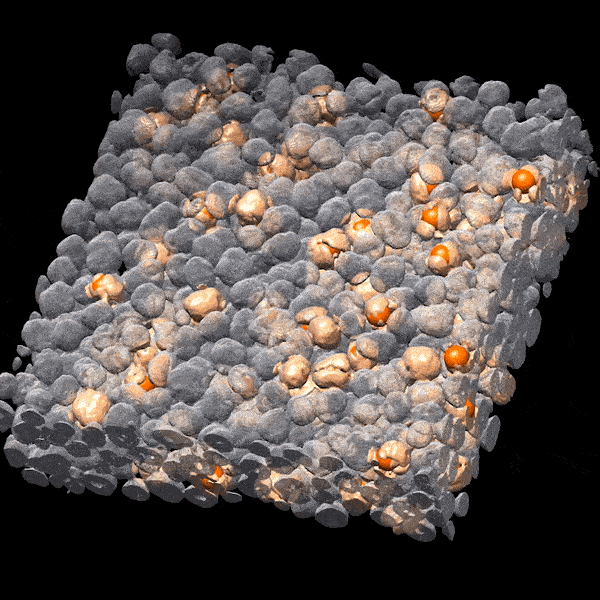New Insight Into Lithium-Ion Battery Technology
The same battery technology utilized in our smartphones and laptops are used in electric cars. These are lithium-ion batteries that are virtually used for anything electronic. Recently, lithium-ion battery technology has not been progressing in improvement. To expand on areas of improvement and increase the use of electric cars, the very science of these batteries must be understood particularly in how they wear out over time.
Now, researchers have captured a detailed X-ray image of lithium-ion battery electrodes which indicates that damage mostly comes from repeated charging. The comprehensive image can help manufactures better design longer-lasting and reliable batteries for use in smartphones and cars.

Purdue University: In-depth computational models of commercial lithium-ion battery electrodes specifically reveal where damage happens with use. (Purdue University image/Kejie Zhao)
“The creation of knowledge is sometimes more valuable than solving the problem of battery electrode damage,” states Dr. Kejie Zhao of Purdue University. “Before, people didn’t have the techniques or theory to understand this problem.”
Findings were published in the journals Advanced Energy Materials and the Journal of the Mechanics and Physics of Solids, and describe how an X-ray tool driven by artificial intelligence is capable of scanning thousands of particles in a lithium-ion battery electrode at once using machine-learning algorithms. The unique technique brings an understanding to how damaging the electrodes deteriorates a battery’s charging capacity. Results show that damage to the battery particles does not necessarily happen in one location or at the same time but that some particles may actually fail more quickly than others.

Purdue University: Researchers have created a new technique that scans thousands of particles in the electrode of a battery at once. The goal is to understand how cracks in these particles impact battery performance, so that the industry can build more reliable batteries with higher charging capacity. (European Synchrotron Radiation Facility image/Yang Yang)
“Most work had been focused on the single particle level and using that analysis to understand the whole battery. But there’s obviously a gap there; a lot differs between a single particle at a micron scale and the whole battery at a much larger scale,” said Dr. Zhao, whose is a professor of mechanical engineering. “The capacity of batteries doesn’t depend on how many particles are in the battery; what matters is how the lithium ions are used.”
“It’s hard for a battery to have a high capacity and be reliable at the same time,” says Dr. Zhao. “Increasing a battery’s capacity often means sacrificing its reliability.”
Source: Purdue University









